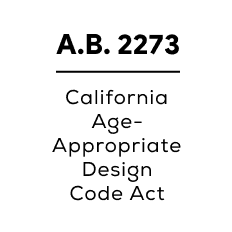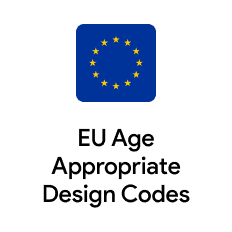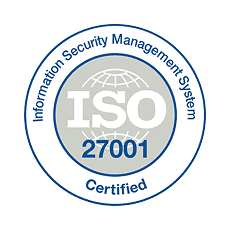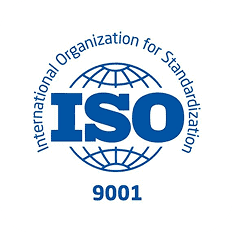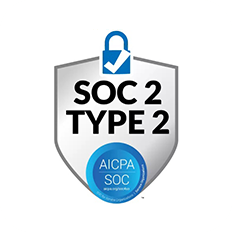Introduction
PrivateID is built for seamless, interoperable identity authentication with complete privacy at its core. Its edge-based architecture and patented homomorphic tokenization ensure biometric data never leaves the device, enabling scalable, compliant, and frictionless authentication across industries.
Clarifai is an AI platform for computer vision, NLP, and multimodal AI that includes face detection/recognition, vector search, and model deployment tooling. It supports SaaS, on-prem, air-gapped, and edge deployments via its Compute Orchestration and Flare Edge offerings, but most standard face workflows rely on embeddings and vector search rather than privacy-preserving tokenization designed specifically for regulated identity authentication.
1. Architecture
PrivateID: Performs 1:1 biometric matching directly at the device edge. Biometric data and PII remain securely on the device, preserving privacy while eliminating data breach risks and simplifying global compliance.
Clarifai: Provides flexible deployment options: Clarifai SaaS, customer cloud/on-prem, air-gapped, and edge (Flare). Typical face recognition patterns use image/embedding processing and vector search within the chosen environment; architecture and data flows depend on how the customer deploys Clarifai (SaaS vs. self-hosted/edge).
2. Privacy & Tokenization
PrivateID: Uses patented Homomorphic Tokenization, transforming biometrics into irreversible, anonymized tokens. Tokens are unique, cannot be reverse-engineered, IEEE 2410 compliant, and exempt from global biometric privacy obligations under GDPR, CCPA, BIPA, and HIPAA. No biometric data or templates are transmitted.
Clarifai: Does not market a privacy-preserving biometric tokenization scheme analogous to PrivateID’s. In SaaS deployments, customers upload data for processing; in self-hosted/air-gapped deployments, data can remain within the customer’s environment. Clarifai provides a Data Processing Addendum and states alignment with SOC 2 and HIPAA for its services, but customers remain responsible for legal compliance and data governance.
3. 1:1 vs 1:N Matching
PrivateID:
•1:1: Edge-based; no images or biometric data ever leave the device.
•1:N: Only anonymized tokens — not images or templates — are transmitted to the server, enabling privacy-preserving, efficient 1:N searches with constant-time lookups (~5ms), regardless of gallery size.
Clarifai: Supports face embeddings and vector search for similarity matching and identification. Implementations rely on storing embeddings/vectors and running similarity queries; data (images/embeddings) live where you deploy (SaaS vs. self-hosted). Performance scales with infrastructure and index design rather than tokenized constant-time lookups.
4. Multi-Modal Biometrics
PrivateID: Supports facial, voice, palm, and fingerprint biometrics combined with Passkeys and additional identity signals (geolocation, Wi-Fi sniffing, device fingerprinting) to enable risk-based authentication from any camera- or microphone-enabled device.
Clarifai: Offers models and workflows across images, video, text, and audio, and includes face-specific models (detection, embeddings, clustering). While broadly multimodal, Clarifai’s out-of-the-box identity tooling centers on face recognition/embeddings rather than turnkey, regulated biometric MFA stacks.
5. Liveness Detection (PAD)
PrivateID: On-device advanced anti-spoofing against photos, masks, screens, and deepfakes, all without transmitting biometric data. Protects privacy and eliminates regulatory and breach risks.
Clarifai: Public product pages and docs focus on detection/embeddings/vector search; a turnkey, native face liveness/PAD product for identity verification is not prominently advertised. Customers typically bring or train PAD models, or integrate third-party services.
6. Scalability & Efficiency
PrivateID: Unlimited scalability with consistent performance. A 5MB image is reduced to a ~1KB token, cutting bandwidth and processing costs while delivering constant ~5ms performance across unlimited gallery sizes.
Clarifai: Scales via its platform and orchestration: vector databases, GPU fractioning, batching, autoscaling, and high-throughput inference. Efficiency depends on deployment (SaaS vs. your cloud/on-prem/edge) and index sizing.
7. Accuracy
PrivateID: Achieves 99.999% accuracy across unlimited gallery sizes, with privacy-preserving tokenization preventing bias amplification. (NIST FRVT leader)
Clarifai: Provides face models (e.g., face embedder, clustering) intended for similarity/recognition use cases. Clarifai does not prominently publish independent NIST FRTE/FRVT test results on its site; customers should validate accuracy on target populations and consider independent evaluations where required. NIST runs public FRTE/FATE programs for vendors who submit.
8. Compliance & Security
PrivateID: Performs biometric processing on-device (1:1) and with homomorphic tokenization (1:N), inherently complying with GDPR, CCPA, HIPAA, and BIPA. Annually certified to IEEE 2410 for biometric processing. No biometric data is ever stored or transmitted.
Clarifai: Provides a DPA and indicates SOC 2 and HIPAA alignment for its services. Compliance posture and obligations vary by deployment: SaaS implies data processing by Clarifai as processor; self-hosted/air-gapped allows tighter data residency control. Ultimately, customers are responsible for regulatory compliance (e.g., GDPR/BIPA) based on their implementation.
9. Deployment & Integration
PrivateID: Lightweight SDK/API for rapid deployment across IAM, healthcare, retail, and finance. Runs on general-purpose hardware — desktops, mobile devices, and POS terminals — without requiring cloud dependency.
Clarifai: Full-stack AI platform with SDKs/APIs, data labeling, training, vector DB, and workflows. Deploy models to Clarifai SaaS, your VPC/on-prem, air-gapped, or edge via Flare; integrates with broader MLOps stacks.
10. Ethics & Trust
PrivateID: Purpose-built for user-consented, privacy-preserving identity verification in enterprise and consumer authentication workflows.
Clarifai: A general AI platform with face recognition capabilities. As with any face system, responsible use requires clear consent, data-minimization, and bias monitoring. Customers must design workflows in line with applicable law and policy; Clarifai’s tooling does not in itself guarantee compliant identity verification.
11. Cost & Total Cost of Ownership (TCO)
PrivateID: Edge and token-based architecture reduces compute, bandwidth, and storage costs by orders of magnitude. Minimal infrastructure lowers long-term TCO.
Clarifai: Pricing and TCO depend on deployment choice and scale (SaaS usage, vector storage, training/inference, and infrastructure if self-hosted). Compute Orchestration emphasizes cost optimization via auto-scaling and GPU packing, but workloads still scale with gallery size and traffic.
12. Latency & User Experience
PrivateID: Delivers constant ~100ms performance for real-time authentication at any scale, optimized for seamless user experiences.
Clarifai: Latency is architecture-dependent. Edge (Flare) can enable local inference; SaaS or remote clusters add network and compute round-trip times. Vector search/query latency scales with index size, hardware, and configuration.
13. Deployment Flexibility
PrivateID: Fully edge-capable for 1:1, hybrid edge-to-server for 1:N with tokenization. No vendor lock-in; supports cloud, on-prem, and hybrid environments.
Clarifai: Not limited to one cloud: deploy on Clarifai SaaS, your cloud, on-prem, air-gapped, or edge. Orchestration supports heterogeneous hardware (CPU/GPU/TPU).
14. Ecosystem & Interoperability
PrivateID: Standards-based (IEEE 2410, FIDO2) interoperability with IAM, MFA, Passkeys, and RBA solutions across industries.
Clarifai: Provides a broad AI platform (models, vector DB, workflows) and integrates with popular developer ecosystems (e.g., LangChain). Interoperability is strong for AI/ML workflows; standardized identity-auth protocols (FIDO/Passkeys) are not the primary focus out of the box.
15. Bias & Fairness
PrivateID: Tokenization removes demographic identifiers, reducing the risk of bias and improving fairness across populations.
Clarifai: Traditional embedding- and image-based approaches can reflect dataset biases; customers should evaluate performance across demographics and implement fairness monitoring. Clarifai provides the tooling to train/evaluate, but bias mitigation depends on model/data choices.
16. Business & Market Positioning
PrivateID: Designed for enterprises, healthcare, finance, and retail requiring privacy-first, compliant, and scalable biometric identity solutions.
Clarifai: Marketed as a general-purpose AI platform (vision, text, audio) with face recognition and vector search capabilities, appealing to developers and enterprises building custom AI applications. It is not a specialized, turnkey privacy-preserving identity authentication stack.
Summary
PrivateID provides a privacy-first biometric platform that performs 1:1 matching at the device edge and uses patented homomorphic tokenization for scalable 1:N searches. Biometric data never leaves the device, ensuring constant-time performance, unlimited scalability, multi-modal authentication, built-in compliance, and lower costs.
Clarifai, by contrast, is a flexible AI platform that includes face detection/embeddings and vector search with deployment to SaaS, customer cloud/on-prem, air-gapped, or edge. It does not market native homomorphic tokenization for biometrics or a turnkey PAD/liveness module; compliance and privacy depend on how you deploy and what models/workflows you build. For regulated, privacy-critical identity authentication, teams typically need to add PAD, policy controls, and careful data governance on top of Clarifai’s platform capabilities.









